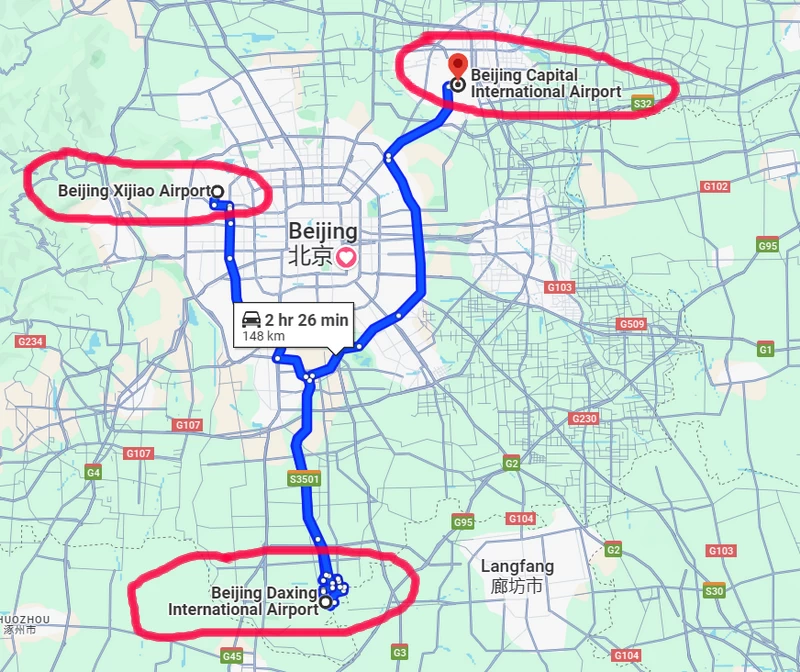Beijing, the capital of China, boasts three airports: Beijing Capital International Airport, Beijing Daxing International Airport, and Beijing Xijiao Airport.

Each serves distinct purposes and audiences, catering to both international and domestic travelers. This guide explores these airports, offering insights into their unique features and roles in Beijing’s air travel network.
1. Main Airport in Beijing
Beijing Capital International Airport
Beijing Capital International Airport stands as the primary gateway for international travelers entering Beijing. Established as the busiest airport in Asia, it’s renowned for its extensive flight network.

Hosting three terminals, the airport efficiently manages a vast number of passengers and flights daily. Its state-of-the-art facilities and services cater to a diverse range of traveler needs, making it a central hub in Beijing’s air transportation.
2. Largest and Most Advanced Airport in Beijing
Daxing International Airport
Daxing International Airport, the newer addition to Beijing’s airports, boasts cutting-edge design and technology. Recognized as the world’s largest single-building airport terminal, it reflects a starfish design for efficient navigation.

Offering a seamless travel experience, Daxing prioritizes passenger comfort and convenience. Its strategic location serves as a significant aviation hub, aiming to reduce the congestion at Beijing Capital International Airport.
3. Beijing Xijiao Airport
Beijing Xijiao Airport, primarily a military airbase, occasionally operates charter flights. Located in the Haidian District, it is approximately 19.75 miles from Beijing Capital International Airport and 8 miles from the city center.
Its unique positioning makes it a strategic point for specific aviation activities. The airport features one runway, catering to specialized flight operations and contributing to Beijing’s comprehensive aviation network.
4. Is Beijing a BJS or PEK?
Beijing, often referred to by its airport codes, has two primary codes: BJS and PEK. BJS represents the metropolitan area encompassing all of Beijing’s airports.
In contrast, PEK specifically refers to Beijing Capital International Airport, derived from Beijing’s former Romanized name, Peking.
Similarly, Beijing Daxing International Airport is denoted as PKX. The distance between PEK and PKX is about 65 km, with a road distance of 80.6 km.
Understanding these codes is essential for travelers navigating flights and airport transfers in Beijing. The transition of flight operations from PEK to the newer PKX is a significant development in Beijing’s aviation landscape, reflecting the city’s growth and modernization.
5. From Beijing Capital Airport to Downtown
Travelers have multiple options to reach downtown Beijing from Beijing Capital International Airport. The most efficient way is the Airport Express subway line, linking the airport to the city’s subway network.
Airport shuttles offer an economical alternative, connecting various city locations. Taxis provide a convenient door-to-door service, while the light train caters to destinations along specific routes. These options ensure a smooth transition from the airport to the heart of Beijing.
6. From Beijing Daxing Airport to Downtown
Reaching downtown Beijing from Daxing International Airport is facilitated by several transport modes. The Beijing subway is a swift option, with dedicated lines connecting the airport to central Beijing.
Public buses serve various routes, offering budget-friendly travel. Taxis are available for direct, personalized trips, ensuring comfort and convenience. These transportation choices make accessing Beijing’s core from Daxing Airport easy and efficient.
Conclusion
Beijing’s airports, each with unique characteristics and roles, form a comprehensive air travel network catering to millions of travelers. Understanding the specifics of Beijing Capital International, Daxing International, Nanyuan, and Xijiao airports enhances travel experiences, ensuring smooth journeys in and out of China’s dynamic capital.


